This article was co-authored by Nicole Larocco-Skeehan. Nicole Larocco-Skeehan is a Dog Trainer and the Owner of Philly Unleashed in Philadelphia, Pennsylvania. Nicole has over 25 years of experience working with animals and currently specializes in group and private dog training and behavior modification. Nicole’s business has been named the "Best of Philadelphia" and she is the author of “The Teaching Dog: Partnering with Dogs for Instruction, Socialization, and Demonstration in Your Training Practice.” She was also on the Certification Council for Professional Dog Trainers Board of Directors. Nicole holds a Bachelor of Science in Marketing and Advertising from Robert Morris University.
This article has been viewed 16,376 times.
A pet can be a good way to teach a child about responsibility and will give the child a sense of accomplishment and purpose. But before you give your child a new pet, you need to consider if your child is ready for the pet and which pet will best suit your child’s temperament and your household.
Steps
Determining if Your Child is Ready for a Pet
-
1Consider your child’s age. Many experts recommend children be at least six years old before they are given a pet or a pet is introduced to the household. As a parent, you are the best judge of your child’s maturity. Note if your child demonstrates self control and discipline when he interacts with other children and other adults. He should show he understands the word “no” and the importance of being obedient, as one of the major elements of being a pet owner is instilling obedience in the pet.[1]
- If you have family friends or relatives who own pets, watch how your child interacts and behaves around the pet. He should be easy going around the pet and eager to help take care of the pet.
-
2Understand the advantages and disadvantages of getting a younger pet. If you are looking for a pet for a younger child, you may think a kitten or a puppy might be easier to train and more adaptable to a new household than an older pet. But puppies and kittens require lots of extra care and attention, which can be demanding on a younger child, and they are prone to rough play like scratching and biting, which can be dangerous for a younger child. A friendly, calm older animal who is comfortable around younger children may be a better choice for your household.[2]
- For an older child, learning how to raise and take care of a younger pet can be a good way to instill a sense of responsibility and purpose. This also means the younger pet can grow with your child and your family, leading to a strong and lasting bond. But if your child is already busy with school and extracurricular activities, and if you do not have a lot of free time to devote to the pet, a younger animal may not be ideal for your household.
- Consider your child’s daily schedule and your lifestyle, as well as the lifestyle of your spouse or other children in the home. If your family has a jam packed schedule, you may want to think about getting an adult animal that is easier to take care of and requires less of a time commitment.
Advertisement -
3Be prepared to help your child care for the pet. Once your child has let you know he would like a pet, keep in mind as the adult you will need to put in the time and effort to help care for the pet as well. Pets are not something you can try out and then return if they do not work out. The pet could potentially be in the household for the duration of her life, so be prepared to adjust your schedule and time to accommodate the new pet.[3]
- Over time, your child should assume most of the responsibilities of caring for the pet. In the initial stages, when the pet first arrives, you will likely need to help your child adjust to caring for the pet and will need to set aside time in your schedule to do so.
-
4Keep in mind the costs of maintaining a pet. The costs for taking care of the pet will vary depending on the type of pet you get your child. But every animal will require a certain level of financial investment to pay for food, maintenance, and vet check ups.
- On average, taking care of a cat can cost $350-$400 a year, and a small or medium dog can cost $400-$500 a year to care for. Be prepared to spend money on the pet and do not select a pet you do not think you can afford to maintain and take care of.[4]
Selecting a Pet
-
1Get a goldfish for a low maintenance “starter” pet. If you’re looking for a pet that requires very little care and will not cost a lot to maintain, a goldfish may be the right pet for your child. Goldfish are also hardy pets, as they can live for several years in cold water in a fish bowl with no filter or extra habitat requirements.
- The most important thing about maintaining a goldfish is feeding him properly and consistently. If your child wants a pet he can cuddle, a goldfish may not be the ideal pet.
-
2Go for a small, cage bound pet for minimal care and maintenance. A small, cage bound pet like a guinea pig, a hamster, or a gerbil are good options for children five years and older. These small pets require minimal maintenance and can be good first pets to give your child a sense of responsibility. Popular small cage bound pets include:
- Guinea pigs: These smaller pets are easy to tame and handle. Though they are happiest when in pairs, they require only a small amount of space in a cage and are social creatures. They require supplemental Vitamin C to remain happy and healthy, so you will need to feed them lots of fresh fruits and vegetables, or Vitamin C tablets.
- Rats: Despite their dirty image, domesticated rats are actually very clean, quite intelligent and do not often bite. They are social animals and enjoy being held and cuddled. They are best kept in pairs, and they require a large cage so they can run around. Most rats are larger than mice or dwarf hamsters, so they won’t slip out of your child’s hands and are easier to handle.
- Hamsters: There two popular hamster breeds: the Syrian hamster and the dwarf or Russian hamsters. Hamsters are solitary creatures and are happy in smaller cages. They are fairly easy to take care of, but they are nocturnal and have a shorter lifespan compared to other pets.
- Gerbils: These animals are very social and can be active during the day or the night. They are easy to tame and fun to watch, especially for children. Most gerbils will only bite if they feel threatened and if someone grabs their tails unexpectedly.
- Mice: These animals are good, inexpensive pets and are easy to care for. However, they live best in groups, preferably with like-genders as this will prevent multitudes of mice babies. They have a shorter life span and have potentially troublesome habits like chewing and gnawing on objects.
- Leopard geckos: If your child is interested in reptiles, leopard geckos may be a good option. They are among the easiest reptiles to care for, as they are naturally docile. However, they are nocturnal so they will be awake at night and require a small habitat to be happy and healthy. Though you can hold leopard geckos, they aren’t as into cuddling as other small cage animals like hamsters or gerbils.
-
3Think about getting a bird for your child. Birds are highly intelligent and very social. They are also good pet for small living spaces like apartments and condos. Most birds are easy to care for and fun to train. However, they are more fragile pets than a dog or a cat and require gentle handling, which may be tricky for children. If your child doesn’t want to be too hands on with the pet, and doesn’t have the patience to train the bird, you may want to go with a different pet.
- Birds living in a household with children are likely to be more vocal than birds that live in households without children. Birds are flock creatures, after all, and tend to imitate the atmosphere around them. If you might be sensitive to chirping, squawking, and other loud bird noises in your home, you may not want to get a pet bird.
- Budgies and cockatiels are popular bird choices for household pets. Parrots are entertaining and fun to train, but they will need a high amount of interaction from their owner.
-
4Keep in mind rabbits are not highly interactive pets. Though rabbits are seen as the classic docile pet for children, in fact they tend to dislike being touched, cuddled, or held. Rabbits are also sensitive to loud noises and are easily stressed out in noisy environments. Consider getting a rabbit if your household is calm and quiet and your child is older and not interested in holding or cuddling with the pet all the time.[5]
-
5Get a dog for high bonding and daily care. Dogs are great for cultivating a strong animal-human relationship and can become your child’s best friend. But dogs are one of the most high maintenance pets and require daily feeding, walking, and attention. Before you get your child a dog, remind your child that the dog will be a big time commitment and your child will need to be willing to follow through on promises to walk and feed the dog. Most dog breeds require extra attention like play sessions and socializing with other dogs. You and your child should discuss who will be in charge of caring for the dog on a daily basis and all the responsibilities required to provide adequate care for a dog.[6]
- You can research dog breeds to find the right dog for your household. Keep in mind all dogs have the potential to bite, as the dog’s breed is just one factor that affects temperament and behavior. Get a dog from a reputable breeder and make sure the dog has a full vet check up before he enters your home.
-
6Choose a cat if your child wants a fluffy animal that keeps its distance. Cats require less maintenance than dogs but they are still fluffy animals that can provide good companionship. Keep in mind cats can be aloof or distant, even to owners they love, and they can respond negatively to a child who always wants to play or cuddle. An irritated cat can scratch or nip at unwanted attention. Explain to your child that a cat may not want as much attention as a dog, and will have a different temperament.[7]
- Before you get a cat for your child, confirm he is not allergic to cat dander or fur. Children who are exposed to cats when they are babies have a reduced risk of developing cat allergies. But older children who have not been exposed to cats have a greater risk of allergies.
-
7Talk to a veterinarian or an animal care specialist at a shelter. If you are still not sure which pet will suit your child and your household, reach out to a veterinarian or a care worker at an animal shelter or an animal adoption service. They may be able to give you suggestions on several pets that might work for you and your child.
- You and your child can also visit animal shelters to look at potential pets. Sometimes, your child will be drawn to a certain animal and be able to identify their new pet for themselves.
Expert Q&A
-
QuestionHow do I teach my child responsibility with pets?
 Nicole Larocco-SkeehanNicole Larocco-Skeehan is a Dog Trainer and the Owner of Philly Unleashed in Philadelphia, Pennsylvania. Nicole has over 25 years of experience working with animals and currently specializes in group and private dog training and behavior modification. Nicole’s business has been named the "Best of Philadelphia" and she is the author of “The Teaching Dog: Partnering with Dogs for Instruction, Socialization, and Demonstration in Your Training Practice.” She was also on the Certification Council for Professional Dog Trainers Board of Directors. Nicole holds a Bachelor of Science in Marketing and Advertising from Robert Morris University.
Nicole Larocco-SkeehanNicole Larocco-Skeehan is a Dog Trainer and the Owner of Philly Unleashed in Philadelphia, Pennsylvania. Nicole has over 25 years of experience working with animals and currently specializes in group and private dog training and behavior modification. Nicole’s business has been named the "Best of Philadelphia" and she is the author of “The Teaching Dog: Partnering with Dogs for Instruction, Socialization, and Demonstration in Your Training Practice.” She was also on the Certification Council for Professional Dog Trainers Board of Directors. Nicole holds a Bachelor of Science in Marketing and Advertising from Robert Morris University.
Dog Trainer Encourage your child to help feed, walk, and train the dog with you—simply teaching the dog tricks like paw, roll over, and play dead can give a child some instant gratification. If you have a small child, it may help to train the dog using physical cues and hand signals.
Encourage your child to help feed, walk, and train the dog with you—simply teaching the dog tricks like paw, roll over, and play dead can give a child some instant gratification. If you have a small child, it may help to train the dog using physical cues and hand signals. -
QuestionCan a child take care of a pet?
 Pippa Elliott, MRCVSDr. Elliott, BVMS, MRCVS is a veterinarian with over 30 years of experience in veterinary surgery and companion animal practice. She graduated from the University of Glasgow in 1987 with a degree in veterinary medicine and surgery. She has worked at the same animal clinic in her hometown for over 20 years.
Pippa Elliott, MRCVSDr. Elliott, BVMS, MRCVS is a veterinarian with over 30 years of experience in veterinary surgery and companion animal practice. She graduated from the University of Glasgow in 1987 with a degree in veterinary medicine and surgery. She has worked at the same animal clinic in her hometown for over 20 years.
Veterinarian How much responsibility a child can cope with depends on their age and abilities. By all means, give the child responsibility, but an adult must ultimately check that the job is done properly and ensure that the pet's welfare needs are met at all times.
How much responsibility a child can cope with depends on their age and abilities. By all means, give the child responsibility, but an adult must ultimately check that the job is done properly and ensure that the pet's welfare needs are met at all times.
References
- ↑ http://www.awsjc.org/resources/select_right_pet.pdf
- ↑ http://www.awsjc.org/resources/select_right_pet.pdf
- ↑ https://www.petfinder.com/pet-adoption/dog-adoption/pets-as-presents/
- ↑ https://www.petfinder.com/pet-adoption/dog-adoption/pets-as-presents/
- ↑ http://www.theguardian.com/direct-line-fixology/2014/oct/10/help-to-choose-a-pet-for-your-child
- ↑ http://www.parents.com/parenting/pets/kids/the-best-pet-for-your-child/#page=8
- ↑ http://www.parents.com/parenting/pets/kids/the-best-pet-for-your-child/#page=4
About This Article
If you want a low maintenance pet for your child, get a goldfish or a cage-bound pet like a guinea pig or hamster, since they’ll give your child a sense of responsibility and require minimal care. Alternatively, you can get your child a rabbit, but keep in mind that rabbits don’t like to be cuddled or frequently touched. Instead, if your child is ready for a bigger commitment, get them a dog, since they’re great for cultivating animal-human relationships and can become your child’s best friend. But remember, a dog will require daily walking, feeding, and attention, so discuss with your child who will take on which responsibilities. For more advice from our Veterinary co-author, including how to decide if you have enough time for a pet, keep reading!
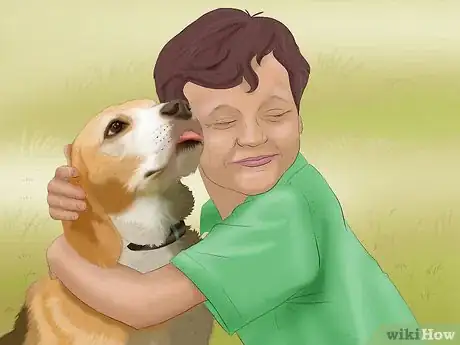
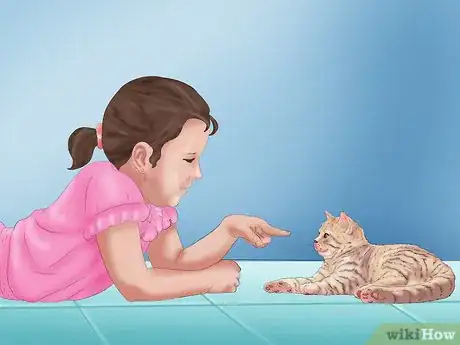




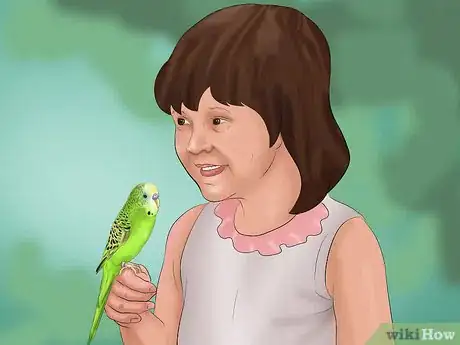
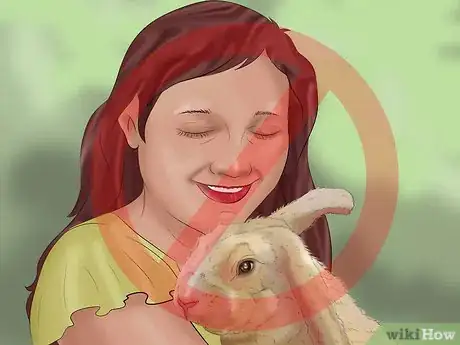
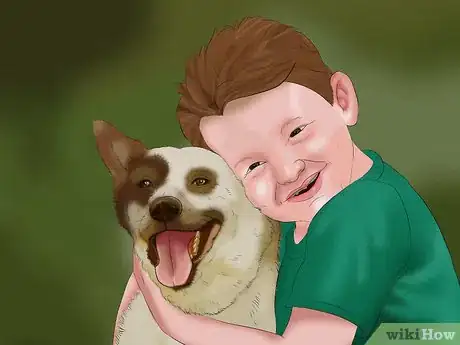
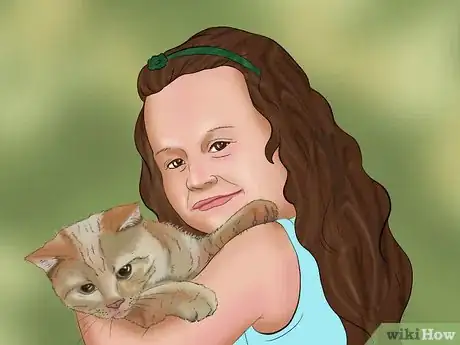

-Step-11-Version-2.webp)










-Step-11-Version-2.webp)





































